I had the same requirement. I checked Android code and found that
- switch ignores any vertical margin/padding applied to a thumb shape drawable (thus thumb always touch the top and bottom of the track)
- the width of the thumb is calculated by taking the horizontal paddings + the max width of the on and off texts.
This makes really hard to make a circle thumb.
But if you specify the thumb drawable as a layer drawable for the sole reason to be able to specify padding for the single layer of the drawable, you can get the desired effect.
Thumb selector:
<?xml version="1.0" encoding="utf-8"?>
<selector xmlns:android="http://schemas.android.com/apk/res/android">
<item>
<!--
NOTE
We want a thumb with padding around it inside the track.
Sadly, a switch draws its track and thumb with the same height ignoring
any padding of the drawable, so using a shape with padding does not work.
To overcome, we apply a trick. We create layer list because the
LayerListDrawable draws itself with taking the top, left, right, bottom
values into account.
-->
<layer-list>
<item
android:top="@dimen/switch_thumb_padding"
android:left="@dimen/switch_thumb_padding"
android:right="@dimen/switch_thumb_padding"
android:bottom="@dimen/switch_thumb_padding">
<!--
NOTE
No need to specify size because:
- The thumb fills the track in height.
- The thumb width is determined from thumb max(on, off) text +
text padding + drawable padding.
-->
<shape android:shape="oval">
<solid android:color="@color/switch_thumb"/>
<!-- NOTE did not work, had to set Switch's thumbTextPadding to the radius -->
<!--
<padding android:right="@dimen/switch_thumb_radius"
android:left="@dimen/switch_thumb_radius"/>
-->
</shape>
</item>
</layer-list>
</item>
</selector>
I set the on and off text of switch to empty (actually to "" to prevent warning about empty resource).
track:
<?xml version="1.0" encoding="utf-8"?>
<selector xmlns:android="http://schemas.android.com/apk/res/android">
<item android:state_enabled="false">
<shape android:shape="rectangle">
<size android:height="@dimen/switch_track_height"/>
<corners android:radius="@dimen/switch_thumb_radius"/>
<solid android:color="@color/switch_track_off"/>
</shape>
</item>
<item android:state_checked="true">
<shape android:shape="rectangle">
<size android:height="@dimen/switch_track_height"/>
<corners android:radius="@dimen/switch_thumb_radius"/>
<solid android:color="@color/switch_track_on"/>
</shape>
</item>
</selector>
Switch style:
<style name="CustomSwitch">
<!-- NOTE this way the switch will be as width as required minimally -->
<item name="android:switchMinWidth">0dp</item>
<item name="android:track">@drawable/switch_track</item>
<item name="android:thumb">@drawable/switch_thumb</item>
<item name="android:textOff">@string/switch_thumb_off</item>
<item name="android:textOn">@string/switch_thumb_on</item>
<!-- NOTE if set to 0dp, the thumb was not visible even with padding
of the thumb drawable set to -->
<item name="android:thumbTextPadding">@dimen/switch_thumb_radius</item>-->
<!--<item name="android:thumbTextPadding">0dp</item>-->
</style>
And finally, the dimens:
<dimen name="switch_track_height">30dp</dimen>
<dimen name="switch_thumb_radius">15dp</dimen>
<dimen name="switch_thumb_padding">2dp</dimen>
So the only 'tricky' thing is to keep height = radius * 2.




